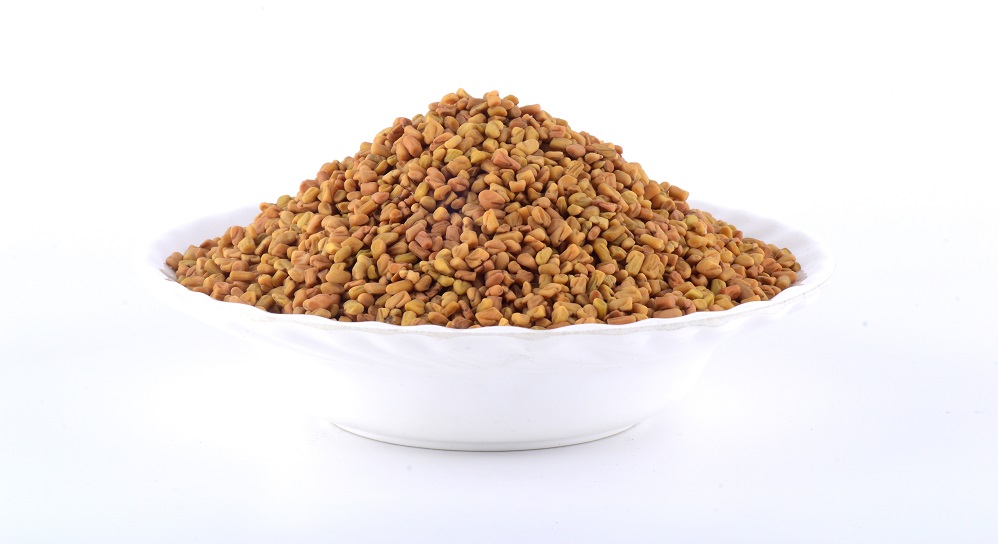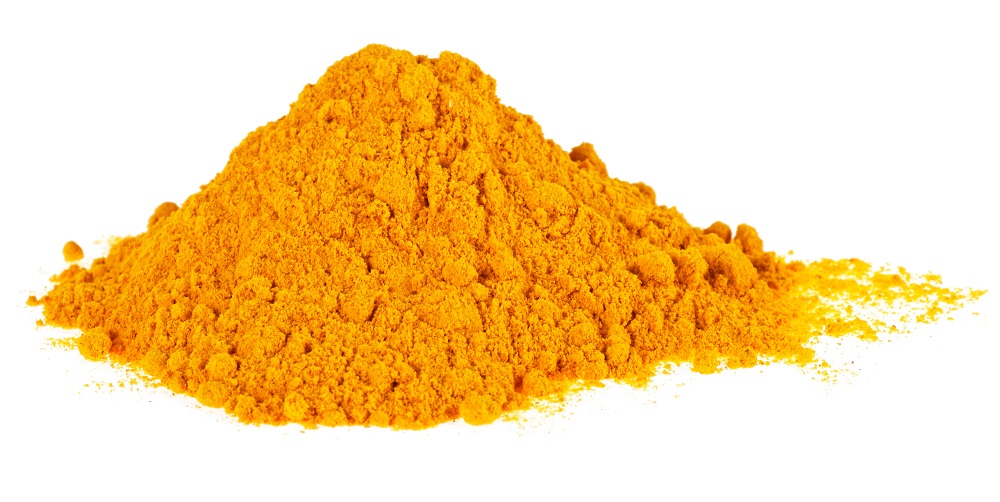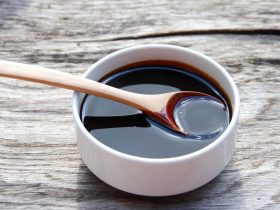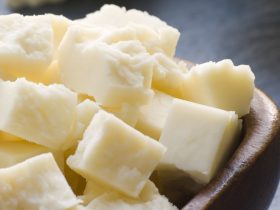Common in Middle Eastern, Indian, Eurasian and African cuisines, fenugreek is a potent seed-based spice used in a variety of recipes for the purposes of imparting a tangy yet bitter flavor that becomes quite sweet when roasted prior to use or subjected to direct heat during the cooking process.
However, despite its unique flavor and plethora of possible uses in the culinary arts, fenugreek may require substitution for a multitude of reasons that may be unavoidable, necessitating that a suitable replacement spice be found so as to complete the recipe.
The best savory substitutes for Fenugreek are mustard seeds, turmeric powder, curry powder spice mix, and garam masala Indian spice mix. The best sweet substitutes for Fenugreek are Maple syrup, caramelized brown sugar, and fennel seeds/fennel spice. The best odor substitute for Fenugreek is lovage.
Is Fenugreek Hard to Substitute?
While the spice fenugreek is no doubt difficult to substitute owing to its unique flavor and distinct aroma, it is possible to replicate certain characteristics of fenugreek’s own native flavor profile, allowing suitable replacements to be used depending on the needs of the dish.

This may be easier classified by first identifying the sort of flavors or characteristics the recipe requires from fenugreek, with such things like curries requiring both its sweet odor and tangy yet bitter flavor profile to act as an underbelly to its more bold tasting ingredients.
The difficulty found in substituting fenugreek in a particular recipe will be entirely according to the chef’s geographical location as well as the sort of characteristics that are required from the fenugreek substitute ingredient, as both of these factors will have the effect of limiting what sort of replacement may be used.
Why Should Fenugreek be Substituted?
Certain situations or circumstances may call for fenugreek to be substituted in a recipe, with such things like a certain intolerance or allergy to fenugreek or the binders used in its commercial manufacturing or a simple dislike of fenugreek’s particular characteristics all necessitating that a suitable replacement be found.
Other reasons behind the necessity of substituting fenugreek could be the desire to create a unique spin on a particular dish, a lack of availability – especially in certain geographical areas- as well as the possibility that the recipe’s flavor profile may be overwhelmed by the strength of fenugreek’s own taste notes.
Do These Substitutes Also Apply to Fenugreek Leaves?
While the vast majority of this article is geared towards the substitution of fenugreek seeds when used as a seasoning in a dish, it may also apply in instances wherein fenugreek leaves are instead being used, especially considering the fact that fenugreek leaves possess a similar but still different flavor profile in comparison to fenugreek seeds.
By extension of this, fenugreek seeds may also be substituted with their leaves counterparts, though this may prove difficult owing to the difference in physical form and minor distinctions in flavor that fenugreek leaves would normally possess.
Savory Substitutes for Fenugreek
Considering the varied uses of fenugreek as a seasoning, it is no surprise that a variety of savory recipes also incorporate the seeds or leaves of this particularly aromatic plant, oftentimes to utilize its tangy and astringent profile of flavor in order to act as an underbelly to which other ingredients may base their flavors in comparison to.
Fortunately, it is far easier to substitute this particular capacity of function in fenugreek than it is to substitute its use in other types of recipes, with a variety of spices and seeds all being capable of filling much the same role with little to no difference in the total experience.
Mustard Seeds
Whether already pre-crushed or in their standard whole form, mustard seeds are capable of presenting an extremely similar body of flavor to that of fenugreek, with both ingredients possessing a distinctly tangy and slightly bitter flavor that is carried by an undercurrent of minor sweetness, making both excellent additions to a variety of savory dishes.
The exact ratio at which mustard seeds may be used as a substitute for fenugreek will depend on whether the mustard seeds have been diluted or allowed to dry, with both of these factors creating a less intense and pungent flavor, thereby allowing the mustard seeds to be used in a nearly one to one ratio with fenugreek.
However, if using fresh or well-preserved mustard seeds, it is better to instead substitute fenugreek in a two to one ratio wherein two tablespoons of fenugreek will equal one tablespoon of mustard seeds.
Turmeric Powder
Oftentimes used in spice mixes as an accompanying ingredient to fenugreek itself, turmeric presents a similarly acrid and slightly sweet flavor that compliments many of the ingredients normally found in recipes that would ordinarily involve fenugreek in some way.

A primary drawback to using turmeric powder, however, is the fact that it may color the dish a distinct yellow color, a property that is characteristic of such dishes like curry or butter chicken, but may be out of place in other kinds of recipes.
Turmeric powder may also present a small level of pungency or spiciness, depending on the particular volume used as well as the relative freshness of the turmeric powder, with freshly grated turmeric being significantly more pungent than its dehydrated and processed counterparts.
Curry Powder Spice Mix
Technically already containing fenugreek and turmeric powder, curry powder spice mixes may be used as fenugreek substitutes in certain situations, with the primary benefit to doing so being the fact that curry powder mixes are readily available in practically any pantry or nearby grocery store.
Due to the fact that no single curry powder spice mix brand uses the same ratio and type of ingredients, it is best to first taste test the spice mix in order to determine whether it will mesh well with the particular flavor profile of the recipe in which it will act as a substitute, as well as to determine how much should be used.
Garam Masala Indian Spice Mix
Occasionally confused with curry powder spice mix, garam masala spice mix is in fact an entirely different spice also originating from Indian cuisine.
Garam masala primarily consists of such spices like cinnamon, cumin, peppercorns and various other highly aromatic herbs and spices so as to create a sweet and slightly bitter flavor that is a close cousin to what would normally be presented by fenugreek seeds and leaves.
Much like curry powder spice mixes, it is advisable to first taste the spice mix prior to its addition or usage as a substitute ingredient, as differing brands of garam masala spice mixes utilize ingredients of varying qualities and proportions, with some being overpowering in intensity and others being too mild.
Sweet Substitutes for Fenugreek
Though fenugreek is most often added to otherwise savory recipes that utilize its bitter and tart flavor in order to bolster its relative taste profile, certain recipes may instead utilize fenugreek for its sweet underbelly of flavor as well as its syrupy odor, creating a vanilla extract-like ingredient.
Maple Syrup

Said to be the most similar in flavor and odor of all the possible fenugreek substitute ingredients, maple syrup and its subsequent imitation products may be used as excellent fenugreek substitute food products in practically any recipe or situation that fenugreek would ordinarily be utilized in.
Though fenugreek is primarily used in its ground seed form or as leaves, the relatively fluid consistency of maple syrup may in fact be a benefit to certain recipes, allowing it to be evenly distributed and incorporated into the recipe without the formation of clumps or pocks of flavor that would otherwise create an uneven experience.
Maple syrup may be used in a direct one to one ratio wherein one teaspoon of maple syrup would be equivalent to one teaspoon of fenugreek seeds or leaves.
However, like certain other substitute ingredients, maple syrup should first be taste tested so as to assess whether this particular ratio holds true, as certain brands of maple syrup and maple syrup imitation products may possess additional sweeteners or other ingredients that alter its relative flavor profile.
Caramelized Brown Sugar
With burnt sugar being a keyword often used to describe the flavor of fenugreek in its roasted or otherwise processed form, it is by no stretch of logic that substituting fenugreek leaves and seeds with burnt or caramelized brown sugar itself would replicate the main body of flavor primarily found in the spice.
A primary benefit to substituting fenugreek with caramelized brown sugar is the level of acridness and sweetness that may be manipulated during the creation of the ingredient, with the chef being able to make it sweeter or more bitter depending on the requirements of the recipe.
Fennel Seeds or Fennel Spice
Significantly more intense in flavor and aroma than fenugreek seeds or leaves, fennel in its full seed pod form or ground up into a seasoning may act as an excellent substitute to fenugreek in the sort of dishes that may benefit from its sweet and herbal flavors.
However, due to the intensity of fennel’s flavor and aroma, it is best to use a significantly smaller volume of its seeds or spice than one would normally use if instead using fenugreek.
The exact ratio of this substitution will depend on the particular form of fennel being used, its relative freshness, and the flavor profiles of the ingredients involved.
Odor Substitutes for Fenugreek
Another benefit to the use of fenugreek seeds or leaves in a recipe is its distinctly sweet odor, often compared to maple syrup or similar sweet ingredients that possess a cloying and slightly earthy smell.
This makes fenugreek seeds and leaves an extremely popular ingredient in dishes that require some level of aromatic benefit to be incorporated into its ingredient list, especially in certain types of cuisines such as Indian or Ethiopian, where fenugreek’s sweet and earthy odor pairs perfectly with similar spices.
Lovage
Whether using the roots, seeds or leaves, lovage is an often overlooked close cousin to fenugreek due to the similarity in their chemical compounds, of which is responsible for their shared characteristic odor of sweetness and earthiness.
However, the relative flavor of lovage is somewhat distinct from that of fenugreek, with lovage being considered more akin to celery or parsley than fenugreek itself.
As such, it is best to use only a small volume of lovage in the event that fenugreek’s particular odor is what is being substituted in a recipe.
References
1. Imre Blank; Peter Schieberle (1993). “Analysis of the seasoning-like flavour substances of a commercial lovage extract”. Flavour and Fragrance Journal. 8 (4): 191–195. doi:10.1002/ffj.2730080405.
2. Pimenov, M. G. & Leonov, M. V. (1993). The Genera of the Umbelliferae. Royal Botanic Gardens, Kew. ISBN 0-947643-58-3.
3. Unknown Author. (N.D.) “Trigonella foenum-graecum”. Germplasm Resources Information Network (GRIN). Agricultural Research Service (ARS), United States Department of Agriculture (USDA).
4. Sajad Ahmad Wani, Pradyuman Kumar, Fenugreek: A review on its nutraceutical properties and utilization in various food products, Journal of the Saudi Society of Agricultural Sciences, Volume 17, Issue 2, 2018, Pages 97-106, ISSN 1658-077X, https://doi.org/10.1016/j.jssas.2016.01.007. (https://www.sciencedirect.com/science/article/pii/S1658077X15301065)





Hi, I'm Dom
Dom Eats was started to help other people fall in love with food. While cooking can feel intimidating, it doesn't have to be.